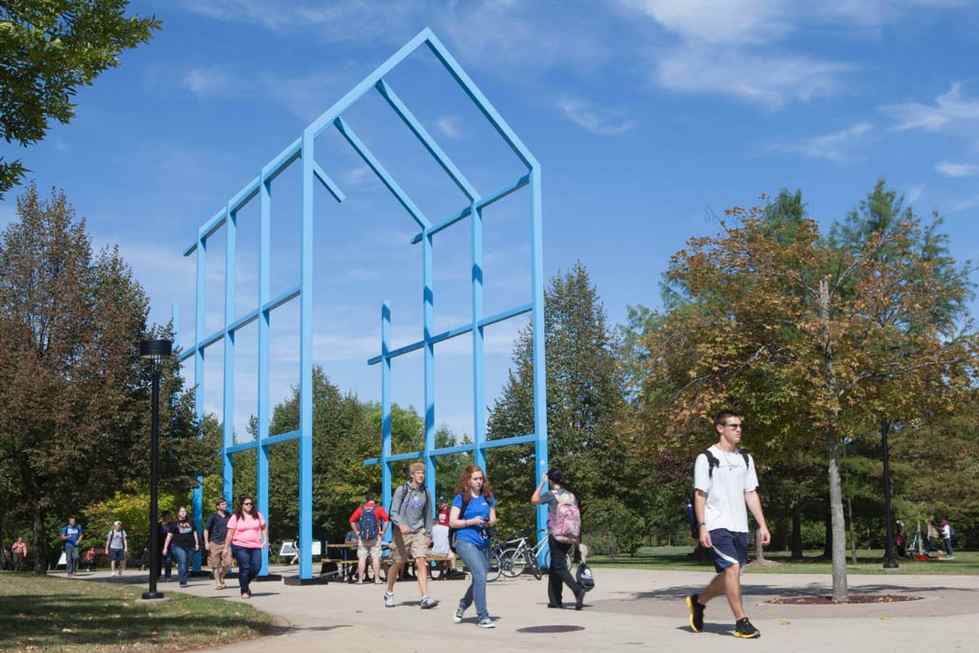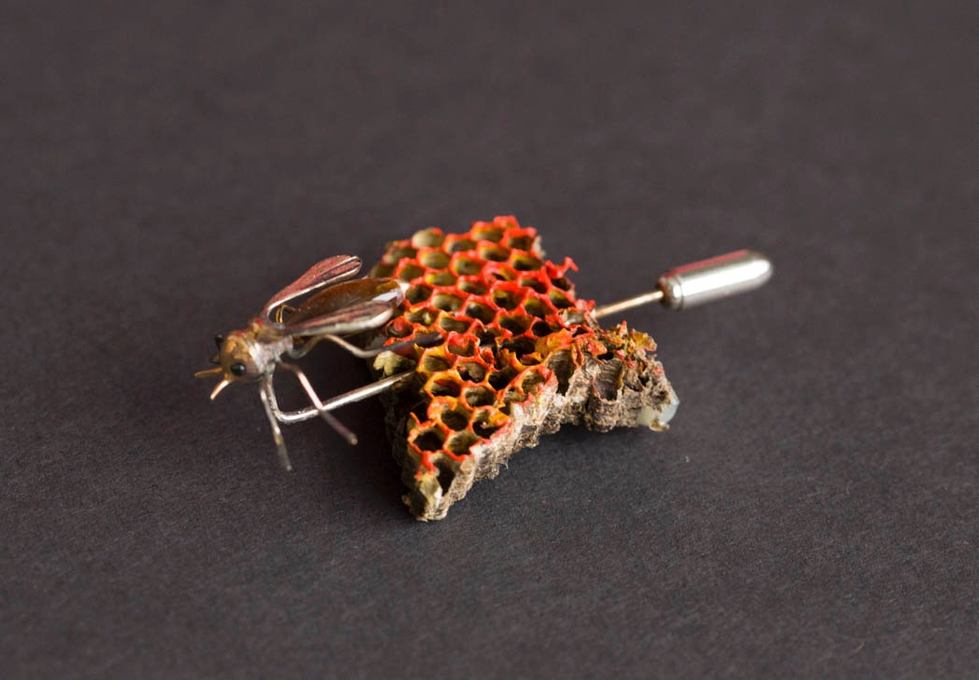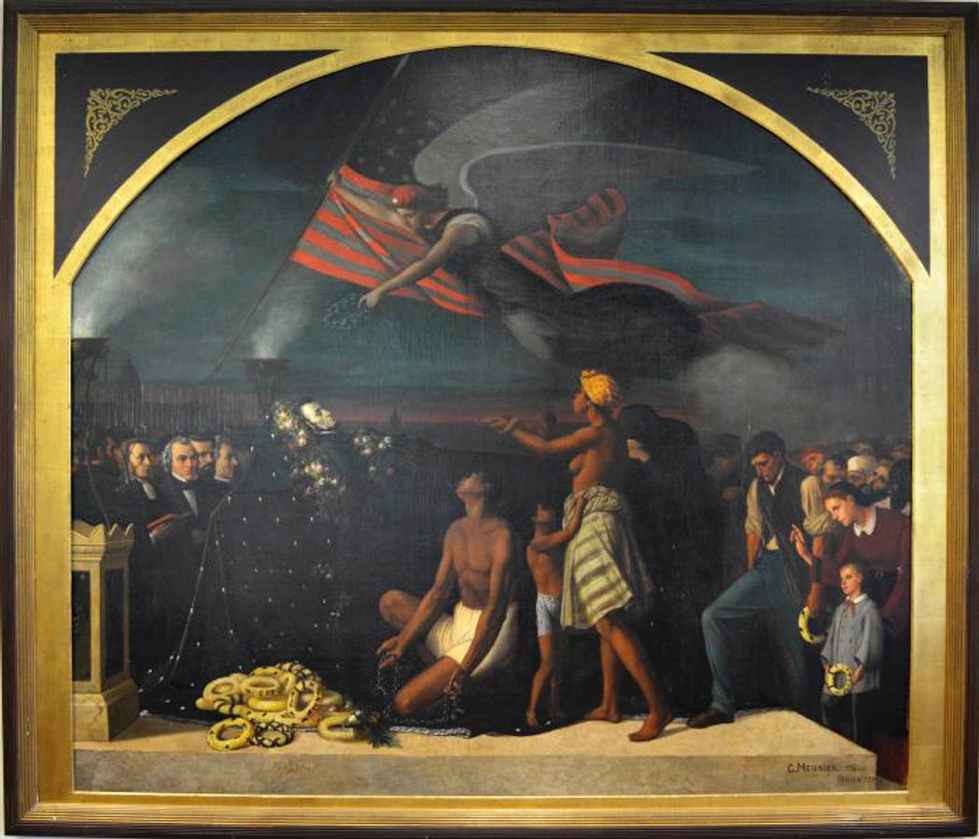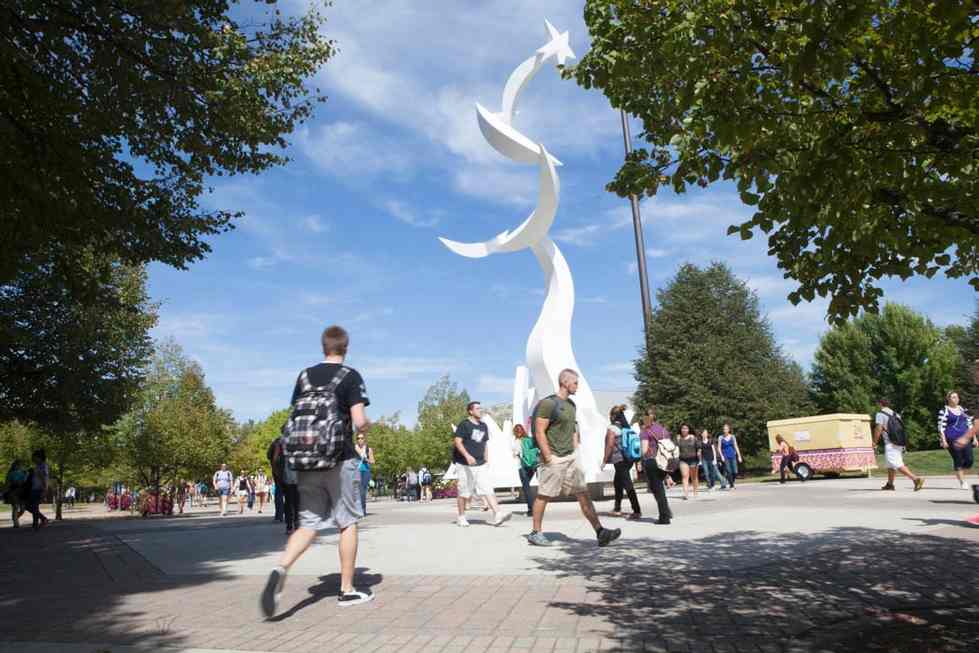Behind the Gallery
How Grand Valley acquires, displays, preserves and diversifies art
by Matthew Makowski
More than 13,000 pieces of art originating from six different continents call Grand Valley their home. They adorn the halls of 120 buildings, beautify the walkways and lawns across all campuses and regional centers, and enrich various curriculums.
While students, faculty and staff members, alumni and visitors pass these pieces every day, many are likely unaware of the intricate inner workings of acquiring, displaying, preserving and diversifying Grand Valley’s art collection.
The Art Galleries and Collections team understands this process best. The mission of this small, but mighty, group is to encourage the appreciation and understanding of art and its role in society through direct engagement with original works of art.
Art acquisition
The first step in that mission is to acquire a diverse range of artwork through a variety of channels. While the university does purchase pieces of art, the most common way Grand Valley acquires artwork is by donation or gift.
“One example is Cyril Lixenberg, a good friend of the university who recently passed away. We have more than 500 works of art by him, most of which were gifts,” said Henry Matthews, director of Galleries and Collections. “We have this incredible resource that tells the story of one artist’s career right here at the university, but he’s not the only one.”
Matthews added that Grand Valley is an attractive option for artists. “If artists gift their works to museums, their pieces may just get put in storage and only be displayed during a specific exhibit or rotation. At Grand Valley, we can permanently display their work,” Matthews said.

The Transformational Link, by Gary Kulak, is pictured on the Allendale Campus. Grand Valley has more than 13,000 pieces in its collection.
Matthews and his team do not always have to look outside of Grand Valley for donations. Cathy Marashi, assistant director of Galleries and Collections, said a large portion of the collection comes from students and faculty members.
“We go to all of the Bachelor of Fine Arts and School of Communications senior thesis shows and select artwork from the students,” Marashi said. “We do our very best to represent the students; it also gives them a good start in life because they’re in a permanent collection.”
Matthews added that artwork is often generated from unexpected faculty members. “Faculty artwork isn’t always from art faculty members. If you’re teaching poetry, we may not know that you also paint on Sundays or that you have this extra hobby,” Matthews said.
Marashi said keeping the art more “home grown” adds to the diversity of the collection — representing the various ethnicities, sexualities and cultures within Grand Valley.
“We try to always make sure we represent diversity and multiculturalism. Whenever we’re getting work, we want to represent all kinds of people. That just broadens the conversation about artwork,” Marashi said.
Aside from donations and purchases, Grand Valley acquires art through commissioned works or via the transfer of art from one institution to another. An example of a transfer occurred when the Grand Rapids Arts Museum gave two large Mathias Alten paintings to Grand Valley. While the museum had the paintings in its own collection, there were not opportunities to display them. Now, these paintings can be seen in the Steelcase Library reading room, located on the Pew Grand Rapids Campus, as part of Grand Valley’s larger collection of Alten’s works.
The shuffle
Once art arrives at Grand Valley, the Galleries and Collections team adheres to a processing standard that’s comprised of examinations, condition analysis, repairs and database documentation. Nathan Kemler, curator of collections management, said once these steps are completed, each piece of artwork is given a unique identifier number.
“Once a home is found for the art, it moves into the prep space and we discuss how it will be presented,” Kemler said.
Kemler explained that if a piece of artwork is two-dimensional, for example, the preparatory process is relatively straight forward. However, if it is a three-dimensional piece, more steps must be taken to ensure the proper supports and protection are in place.

“Bee Broach” by Stella Benvenuto, 0.5 inches high x 2 inches wide, is the smallest piece of art in GVSU's collection.

"Allegory of the Death of Lincoln" by Constantine Meunier
While artwork can change locations at Grand Valley at any time, for any number of reasons, the introduction of new buildings often initiates a process the Art Galleries and Collections team has branded “the shuffle.”
“If it’s a brand-new major building, not just a quick refresh, I go to the deans who are related to that building and ask them to form an arts advisory committee,” Matthews said. “Together with our staff, we work with them to make sure we have theme-oriented art to add to the mix.”
Matthews added that his team strives to tell a story in each building that will benefit faculty and students alike.
“We try not to just put up pretty things to decorate halls,” Matthews said. “We really try to connect what the needs are of the departments and, if at all possible, how they’re going to use it for teaching purposes. Then the art really starts to be plugged into the curriculum, and that’s a whole other level of using the collection.”
Marashi explained that shuffles are often circular processes that can last up to a year. When art moves into a new building, a new shuffle is triggered to replace artwork in the existing buildings. Artwork is also often extracted from various buildings to be displayed during the numerous programs and events hosted by the Art Gallery each year, which include art-inspired concerts, lectures, performances, art-making activities and exhibition tours.
Stacey Tvedten, Art Gallery program coordinator, said this programming is the primary way the gallery directly engages students, faculty members and the local community with the diversity of the art collection.
“The educational component of our department allows us to connect collection holdings with specific curricular goals of faculty,” Tvedten said. “Our intent is that through interaction with original works of art we can build cultural understanding, visual literacy and critical thinking skills.”
Museum standards
No matter the reason why a piece of art moves, the artwork must first be prepped before it can be displayed. Alison Christensen, Art Galleries and Collection preparator, said during this process there are two primary considerations: preservation and longevity.
“We’re always concerned that once we have our hands on the piece, it won’t deteriorate when we’re matting and framing it,” Christensen said.
To ensure artwork at Grand Valley has the longest life possible, the team observes a set of museum standards, including using UV Plexiglas to encase artwork, using foam core and acid-free matting, and making sure the frame is durable enough to hold security hardware.

More than 3,500 artists are represented in Grand Valley's collection, including James Clover's "Heaven and Earth" on the Allendale Campus.
In terms of longevity, Christensen said using acid-free matting is one of the most crucial standards to follow.
“Regular matte board is not archival and over time it starts to yellow because the chemicals used to make it can break down the artwork faster. Acid-free usually has a blend of cotton and cloth so it’s a more natural process and doesn’t use the same chemicals, which equals less damage to the art over time,” Christensen said.
Loaning art
While artwork may reside permanently in Grand Valley’s collection, that doesn’t mean the artwork permanently stays on campus. Kemler said since the university owns individual pieces from larger existing collections, there are instances when Grand Valley loans artwork to other institutions.
“We do have major paintings that are internationally known and we also have a lot of art going out locally in West Michigan,” Kemler said. “We send art out to Saugatuck Center for the Arts, Hope College, Calvin College and many other places. They can all access our collection and we have a lot of parallels to other regional collections.”
“Allegory of the Death of Lincoln,” for example, recently returned to Grand Valley after being showcased amongst 850 other works of art by the late artist Constantine Meunier in a special retrospective exhibit celebrating his work at the Royal Museum of Fine Arts of Belgium in Brussels.
Digital accessibility
Aside from making art available to global audiences through loans, the collection is digitally accessible through an online gallery and mobile app. Kemler explained the goal of the app revolves around exploration and sharing.
“The app will show you where all the art is on campus. If you go into a building, it’ll show you what’s on each floor or you can even look up artists by name or by our unique identifier numbers,” Kemler said. “It’s a way of exploring things around you and it’s an easy sharing tool because social media is integrated.”
Matthews said the digital accessibility of the collection is something that sets Grand Valley apart from other institutions. “It’s an extraordinary thing for an institution like ours to have its entire collection online and accessible this way. Most museums in this country — in the world — don’t have that,” Matthews said.” It makes us pretty special and it’s an extraordinary gift.”
View the collection www.gvsu.edu/artgallery. To get the app, search “Art at GVSU” in the app store.
